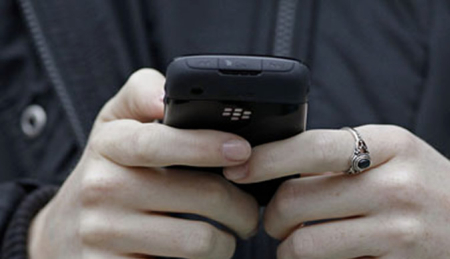 | « Back to article | Print this article |
Five common mobile web mistakes and how to fix them
After years of eager anticipation, the mobile revolution is now truly moving ahead.
According to Morgan Stanley, the volume of mobile users will outstrip the number of desktop Internet users by 2014. By 2011, Nielsen expects the US market will own more Smartphones - with advanced browsers and connectivity - than ordinary "feature" phones.
But as mobile opportunities increase, so do customer expectations. Unfortunately, many companies racing ahead with the mobile revolution are stumbling across a number of obstacles along the way to their goal: a consistent mobile web presence that satisfies customers and encourages business growth.
Let's have a look at top five mobile web experience mistakes companies should avoid if they want achieve success, according to Gomez, a leading solution platform for optimising performance, availability, and quality of web, non-web, mobile, streaming and cloud applications.
Click NEXT to read more...
Five common mobile web mistakes and how to fix them
Customers' perspective
It's too easy to feel cozy and warm behind the comforts of your firewall where everything from web servers to load balancers seems to be running okay.
But that's not how your customers see things at all. The service they receive (or don't) comes at the end of a complex mobile web application delivery chain that includes major Internet service providers, third-party services, content delivery networks, local ISPs, mobile carriers, mobile devices and more.
Problems at any point in the chain frustrate your customers.
Click NEXT to read more...
Five common mobile web mistakes and how to fix them
As many as two-thirds of all performance failures occur outside the firewall. Yet no matter where the problems arise, the blame - and the consequences - will fall on you.
That's why you need to ask the kind of questions that expose your mobile performance the way your customers experience it.
What do customers want from your mobile service?
Is your content optimized to perform well on mobile devices with widely different capabilities, or is it creating unintended frustrations? For example, reducing the number of HTTP requests or using simple tools to optimize images can have a major, favourable impact on performance.
Where do customers access your service?
Does your service perform well regardless of geographic location or network? Remember, in a globally connected world, it's always "business hours" somewhere - your service must be strong, 24/7.
How do customers use your service?
Does your mobile site render correctly regardless of device, be it an iPhone, a Droid or a BlackBerry? Are your third-party partners delivering the service levels they promised, or are they generating performance issues that impact your customers?
Click NEXT to read more...
Five common mobile web mistakes and how to fix them
Short of expectations
Mobile users expect to make sacrifices – in content depth and its presentation - in exchange for anyplace, anytime convenience. But the one thing they won't sacrifice is speed: 58 per cent of mobile phone users expect Web sites to load as quickly on their phones as on their desktops.
While the desktop user may be content to surf the web, mobile users typically use their devices for urgent needs, such as checking a flight status, confirming reservations, comparing price options and making appointments.
Urgency sets the expectation and if you fail to meet it, you'll pay a steep price.
Click NEXT to read more...
Five common mobile web mistakes and how to fix them
According to a survey of over 1,000 US mobile phone users, 52 per cent of consumers are unlikely to return to a Web site they had trouble accessing by phone.
Worse, 40 per cent said they'd likely visit a competitor's Web site instead.
With social media as a readily available bullhorn, disappointed customers are not content to suffer silently. Instead, they rapidly share their frustrations with millions of other social media users, slamming your brand, your revenues and your ability to encourage app adaptation.
While performance issues may be complex, the consequences are simple: There's an unmistakable correlation between increases in mobile service load times and increases in end-user abandonment.
Click NEXT to read more...
Five common mobile web mistakes and how to fix them
Prime time
It's just not good enough to be prepared for "ordinary" business conditions. After all the expense of driving traffic and promoting your mobile service, you have to be ready for peak traffic conditions when interest - and expectations - are at their height.
When your mobile site or application is overwhelmed by extraordinary activity, potential customers face unbearably slow load times and a very unwelcomed message: "We're currently experiencing high traffic volume. As a result, we were not able to process your request. Please try again."
Will they? Not likely.
Click NEXT to read more...
Five common mobile web mistakes and how to fix them
Your mobile site may be powered by a third party, but you're responsible for its performance.
After all, visitors see your brand and will hold you accountable, regardless of the underlying vendor arrangement.
Click NEXT to read more...
Five common mobile web mistakes and how to fix them
Out of sight
As in, your customers can't find your mobile web sites, applications or text message initiatives. And if they can't find your mobile content or services, you've lost their business.
For starters, this means automated redirects that recognize mobile users and instantly lead them to the appropriate mobile content.
Click NEXT to read more...
Five common mobile web mistakes and how to fix them
Mobile users who search for a leading retailer get two options: a paid for PPC ad and an organic listing - both of which lead to the appropriate mobile optimized web site.
Click NEXT to read more...
Five common mobile web mistakes and how to fix them
Know your customers
Do you truly know your mobile customers? Without genuine insight, you might be tempted, for example, to offer mobile users the regular web site that works well with your Internet customers.
But most smartphones and feature phones cannot support the complex, high-bandwidth Flash and Ajax applications at the heart of your site.
Further, your feature- and content-rich web site can pose numerous issues regarding usability, navigation or even screen real-estate on handheld devices.
Click NEXT to read more...
Five common mobile web mistakes and how to fix them
Should you rely on your regular site, offer an optimized mobile web site or create a mobile application? To arrive at the right answer - and craft the most effective solution - you need to know:
i) What devices do your customers use? BlackBerries? iPhones? Droids? Something else?
ii) What networks are they on? What speed do they deliver?
iii) What are their usage patterns? Can you anticipate the peaks?
iv) What about locations? Can you deliver consistent performance, from Sausalito to Singapore?
v) What is their context? Are they waiting on line? In a hurry? At the airport or in a cab?
vi) Most importantly: Can customers complete key transactions?
vii) While on the move with one free hand in areas with spotty network connections?










